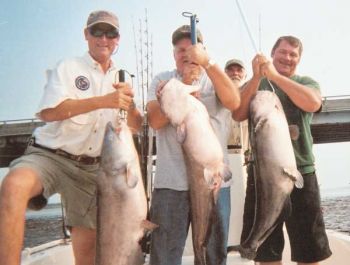
Coastal rivers swell with shad during the spring, and winter-starved catfish are some of the first to feast on the banquet.
Even though winter never really gets a good grip on the Lowcountry, the lengthening days of March have a feel to them like none other on the calendar.
The air smells clean, and the warmth of the sun on your skin is as comforting as a blanket to a 4-year-old. While the woods and swamps seem stark and lifeless, pockets of color from yellow Jessamine are a visual reminder that spring is coming.
The only problem with the coming of spring is its trickery. The pleasant temperatures and sunshine welcome anglers, but the physics of energy and water keep the fish on a different schedule.
Even though air temperatures have warmed, there is a delay in the heating of water. You could have a week of 70-degree days in March — up from the 40s of previous days — but the water temperature may only nudge up into the 50s. It is enough to get some fish species active, but not adequate to get the entire community biting.
Fortunately, not all fish have a fondness for warm water like tarpon or bonefish. An increase of a couple of degrees from winter lows can get some species on the move. Two of those species are shad and blue catfish. A cause-and-effect relationship exists between these two early-spring movers.
Click here to read more on Shad Run Catfish



Be the first to comment